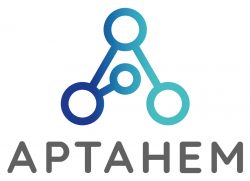2024-10-28

CEO Kristian Tørvold
"Ocean Sun's technology has been tested and proven over several years. Our patented solution has several advantages to all other floating solar technologies, especially in hydropower reservoirs and nearshore locations. This positions us in a unique position to meet a growing demand."
For those who haven’t heard of Ocean Sun before, can you tell us a bit more about your business, what you do, and which markets you address?
Ocean Sun is a company focused on renewable energy, specifically in the solar power sector. We offer a unique solution for floating solar power production, utilizing modified solar PV modules on a thin, flexible membrane. This technology can be used in various water bodies, from offshore locations to reservoirs and lakes.
Our core innovation is a floating power system with solar panels mounted on a hydroelastic membrane. This design enables renewable energy production at world-beating cost levels due to low material use and increased power output from the cooling effect provided by the water. By lowering the solar panels’ operating temperature, we can boost power production by 5-10% compared to air-cooled PV modules, depending on the location.
We address several markets, including hydropower reservoirs, nearshore areas, and future offshore locations. Our technology is resilient to waves, saltwater, fluctuating water levels, floating debris, typhoons, and strong currents. This opens new markets that other floating solar technologies can’t easily access, and it offers higher performance from the natural water-cooling effect.
Ocean Sun’s business model involves licensing our patented technology to developers and EPCs. This approach facilitates rapid scalability, reduces project risk, and enables the company to remain asset-light. Our main revenue comes from license fees payable per watt peak installed, in addition to engineering fees though feasibility studies.
Could you tell us more about your business, what advantages your solution offers, and how it stands up against competing players with alternative solutions?
We offer a unique solution for floating solar power production, utilizing modified solar PV modules on a thin flexible membrane. This technology can be used in various water bodies, from offshore locations to reservoirs and lakes. Our solution offers several advantages over competing players with alternative solutions:
The water body cools the solar panels, reducing operating temperatures and increasing their power output by 5-10%, depending on geographic location. This natural cooling adds considerable value by enhancing energy efficiency.
Secondly, our design uses fewer components, such as the floating collar and membrane, leading to lower material costs and CapEx. This allows us to offer one of the lowest-cost floating solar systems in the market. Our solution excels in challenging environments like coastal and nearshore areas, where traditional pontoons struggle. The lightweight structure and fewer components result in significantly lower installation costs compared to conventional steel structures or pontoons. Additionally, our system is engineered to withstand constant waves, saltwater, debris, and fluctuating water levels in reservoirs. Its resilience to strong currents and harsh environments gives us a significant competitive edge over traditional solutions
Furthermore, our technology allows rapid deployment. The floating collar can be welded together on-site, and the membrane is ready to deploy from a container. Additionally, the ability to walk on the membrane during installation simplifies the process, reducing both time and labor costs.
Lastly, Ocean Sun’s membranes are lightweight and flexible, allowing two membranes to fit into a single 40-ft container. This reduces transportation costs, making it easier and cheaper to deliver and install in remote locations.
How do Ocean Sun plan to use the insights gained from the BOOST project in La Palma to strengthen your future offshore projects, and what role do you see this project playing in your long-term strategy?
The BOOST project in La Palma has provided us with valuable insights into how our system performs in larger waves and in a more exposed coastal environment. These learnings have allowed us to further strengthen our floating solar system’s design, enabling it to withstand even more demanding offshore conditions. While wave basin testing offers some insights, real-world conditions are essential for validating performance and making adjustments.
The offshore solar market is still in its early stages, why we do not anticipate significant expansions in this sector within the next five years. Therefore, our focus remains on enhancing our solution through ongoing R&D and pilot projects. Meanwhile, we are directing our sales efforts towards opportunities in more benign reservoirs and nearshore areas where our technology has already proven effective.
The BOOST project plays a crucial role in our long-term strategy by serving as a testing ground for our most robust designs under harsh conditions. This allows us to compete with other technologies offshore in the coming years. The insights gained from the BOOST project help us refine our technology and ensure its resilience and efficiency in various environments.
Can you tell us more about the new Soneva project in the Maldives, and what opportunities this project opens up for Ocean Sun?
The Soneva project in the Maldives is a significant milestone for Ocean Sun, as it showcases the potential for floating solar power in the global resort market. The project involves a 2 MWp installation composed of three interconnected floating solar rings at the luxurious Soneva Secret resort. This will significantly reduce the resort’s reliance on diesel generators, cutting operational costs and lowering the carbon footprint.
The success of this project opens doors for Ocean Sun to tap into not only the 170 resorts in the Maldives but also similar markets globally. Resorts often rely on expensive diesel generators, and our floating solar solution offers a lower LCOE and a smaller carbon footprint. As this project moves quickly through approval processes, we anticipate similar opportunities to emerge in other island nations and remote resort markets
We are already in several dialogues with similar projects, and success of the Soneva project will demonstrate the robustness and cost-effectiveness of Ocean Sun’s technology, making it an attractive option for other resorts and similar applications worldwide.
How does the change in the Sunseap project in Singapore affect Ocean Sun’s strategy for managing ongoing projects in the order backlog, and what measures are you taking to ensure the successful construction and implementation of your projects in Greece and Singapore?
The 1.2 MWp floating PV project with Sunseap in Singapore, originally planned as a full-scale demonstrator, had to be re-evaluated due to delays in approvals and grid connection. This experience has taught us to be more cautious when assessing a project’s maturity and before making public announcements.
Going forward, we will focus on project opportunities in regions with established legal frameworks for floating solar installations. This approach will ensure smoother execution and faster approvals. In Greece and Singapore, we continue to work closely with local authorities and stakeholders to help navigate the approval processes, and once these are in place, future projects will progress much more rapidly
Given this, it is crucial for Ocean Sun to focus on project opportunities in regions that already have a legal framework for floating solar installations, whether nearshore or on reservoirs. This strategy will help streamline the approval process and ensure smoother project execution.
Could you elaborate on your strategy for achieving profitability?
We believe that the market for powering fish farms, which our partner Alotta is focusing on, should see several new installations in the coming years. While this will generate some revenue, the relatively small size of each installation means it won’t be sufficient on its own to achieve profitability for Ocean Sun.
The nearshore resort and island nation market is also an important area for achieving profitability. This market has relatively little competition, and although each project will be relatively small, around 2-4MWp per installation, these projects will be a significant source of revenue and could potentially help Ocean Sun achieve profitability.
However, the most crucial aspect of our strategy is to focus on building utility-scale projects in markets with existing legal frameworks for floating solar installations. We believe the first utility-scale projects will be in hydropower reservoirs. And due to our competitive advantage in these more complex water bodies, this market is our main focus. Just a few utility scale projects on hydro reservoirs will be enough to turn Ocean Sun profitable.
Where do you see Ocean Sun in three years?
In three years, we expect to have achieved profitability through the completion of utility-scale floating solar projects in hydropower reservoirs, where our technology has a competitive advantage. We expect to have successful utility-scale projects completed, contributing to our profitability and growth.
Ocean Sun will continue to invest in research and development to enhance our floating solar technology. We plan to leverage insights from ongoing projects, such as the BOOST R&D project in La Palma, to improve the robustness and efficiency of our systems. Our goal is to stay ahead of the competition by continuously innovating and refining our technology while remaining affordable, and in three years time have a technical solution that can operate in certain exposed coastal locations.
We will focus on ensuring the success of our existing installations by improving operational efficiency, keep high performance ratios, and reducing maintenance costs. One of our key initiatives is the implementation of automatic cleaning systems, which will make the PV modules on the Ocean Sun membrane the cleanest in the industry.
Can you name three reasons as to why Ocean Sun is a good investment today?
- Firstly, Ocean Sun’s technology has been tested and proven over several years. Our patented solution has several advantages to all other floating solar technologies, especially in hydropower reservoirs and nearshore locations. This positions us in a unique position to meet a growing demand.
- Secondly, the floating photovoltaic market is experiencing significant growth. By the end of 2023, the cumulative installed capacity reached 7GWp, with over 2GWp installed in that year alone. This rapid expansion indicates a strong and growing demand for FPV solutions, positioning Ocean Sun well within a growing market.
- Lastly, Ocean Sun has undergone a significant transformation in its management team, with the majority being newly appointed. We are currently in the process of recruiting a new Chief Commercial Officer (CCO), which will further strengthen our leadership and prime us for the upcoming growth.




